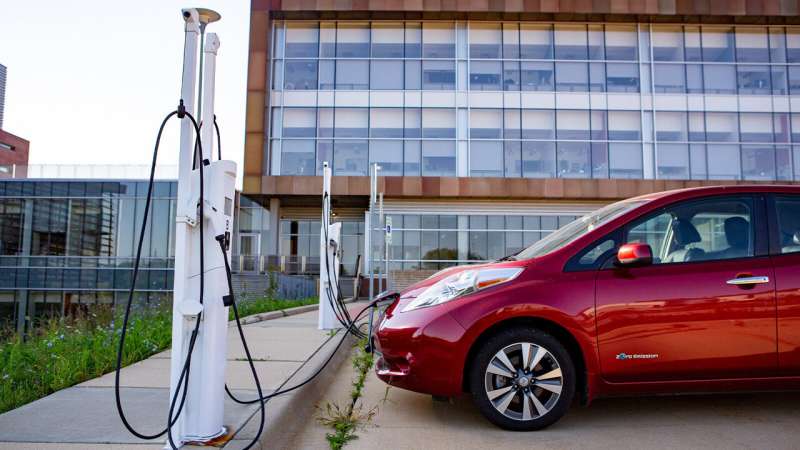This article has been reviewed according to Science X's editorial process and policies. Editors have highlighted the following attributes while ensuring the content's credibility:
fact-checked
trusted source
proofread
Electric vehicle drivers can estimate their personalized fuel savings with new Argonne tool

A new tool launched by the U.S. Department of Energy's (DOE) Argonne National Laboratory enables drivers to estimate, at the ZIP code level, how much they save on fuel costs by driving a plug-in electric vehicle (either a plug-in hybrid [PHEV] or a battery electric vehicle [BEV]).
The tool, Driving Electric: Local Fuel Savings Calculator, is freely available to the public. Drivers can enter their ZIP code or state, as well as any information they have about their vehicle size, model year, tank size, fuel economy and annual mileage. The tool then generates estimates of how much drivers can save.
"Driving a plug-in electric vehicle rather than a conventionally fueled vehicle results in fuel cost savings and reduced greenhouse gas (GHG) emissions in more than 99% of U.S. ZIP codes," said Yan (Joann) Zhou, principal transportation systems analyst in the Energy Systems and Infrastructure Analysis (ESIA) division at Argonne.
"With this new tool, drivers can enter information about their vehicle, their location, annual mileage and local fuel prices and see how much they're saving per mile, per tank and per year."
The EV savings calculator is based on Argonne's recently published technical report, Adoption of Plug-In Electric Vehicles: Local Fuel Use and Greenhouse Gas Emissions Reductions Across the U.S. With this report, scientists shed light on new information that previously was not well understood: How local factors like fuel and electricity costs can affect an individual's savings—and how they can reduce GHG emissions—depending on where they live.
The researchers found that, compared to driving a gas vehicle of equivalent size, driving a BEV leads to significant savings of up to $2,200 annually. The largest fuel savings were found in areas with high gasoline prices, low electricity prices, preferences for larger vehicles and high annual mileage driven.
Additionally, the researchers found that, compared to driving an equivalent gas vehicle, driving a PHEV leads to savings of up to $1,500 annually.
The report also examines the impact of GHG emissions, using a "well-to-wheels" approach, which considers the entire life cycle of a vehicle's energy consumption. The investigators found that BEV drivers have the potential to save close to five tons of carbon dioxide equivalent per every 10,000 miles driven.
"When more individuals choose to drive BEVs, they're not only contributing to cleaner air—they can also enjoy significant cost savings for themselves," said Xinyi Wu, a transportation systems analyst in the ESIA division and lead author of the report.
"With this tool, individuals can now see just how much they can save based on where they live and how much they drive."
More information: Xinyi Wu et al, Adoption of Plug-in Electric Vehicles: Local Fuel Use and Greenhouse Gas Emissions Reductions Across the U.S., (2024). DOI: 10.2172/2314987
Access the tool at energy.gov/local-fuel-savings.


















